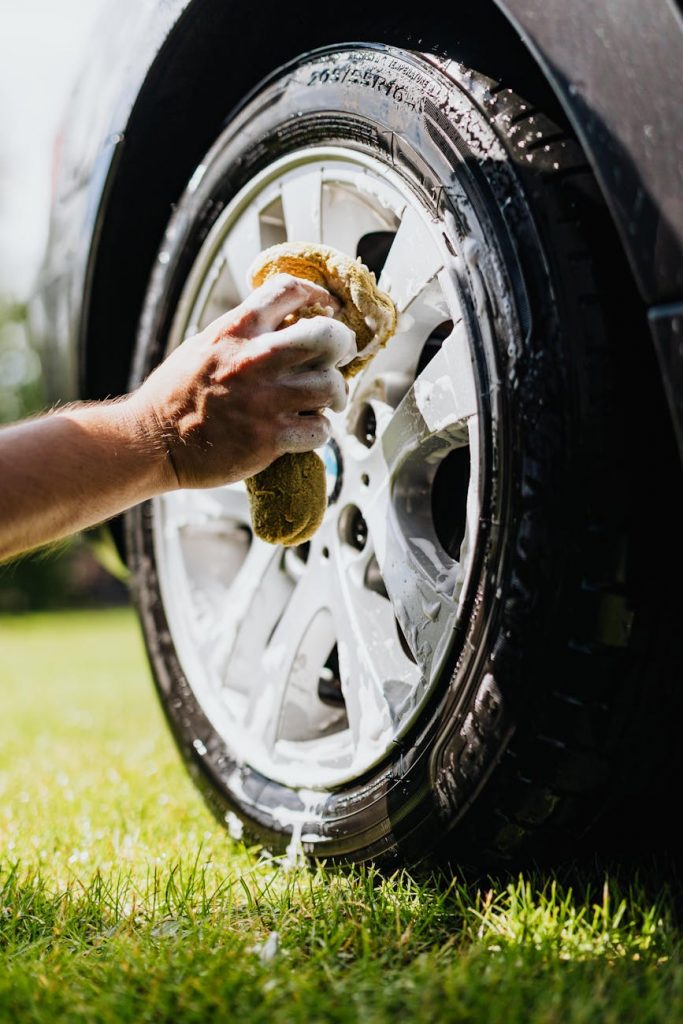Getting the Right Tire and Rim Fit
Choosing the right tires and rims for your ride isn’t just about looks—it’s about safety and performance. Let’s break down why fitment matters and what you need to know.
Why Fitment Matters
When your tires and rims fit just right, your car handles better, uses fuel more efficiently, and gives you a smoother ride. Mess it up, and you could face uneven tire wear, poor handling, or even dangerous driving conditions.
Imagine this: if your rims don’t fit properly, they can stress your car’s suspension, leading to expensive repairs. Plus, if your tires and rims aren’t a match, you might void your warranty. For more on that, check out our tire and rim warranty guide.
What to Consider for Fitment
Getting the right fit involves a few key factors:
- Rim Size and Diameter: Your rim’s diameter needs to match your tire size. If it’s off, you risk air leaks or blowouts.
- Bolt Pattern: The rim’s bolt pattern must align with your car’s hub. If it doesn’t, the rim won’t fit securely. Learn more in our bolt pattern guide.
- Offset and Backspacing: Offset is the distance from the rim’s mounting surface to its centerline. Backspacing measures from the mounting surface to the rim’s back edge. Both are crucial to ensure the rims fit within the wheel wells and don’t mess with the suspension.
- Load Rating: Your tire’s load rating should meet or exceed your car’s weight needs. A lower rating can lead to tire failure.
- Speed Rating: This tells you the max speed your tire can handle. Make sure it matches your driving style.
Here’s a quick summary:
| Factor | What It Means |
|---|---|
| Rim Size & Diameter | Must match the tire size |
| Bolt Pattern | Must match the car’s hub bolt pattern |
| Offset & Backspacing | Ensures proper fit within wheel wells and suspension |
| Load Rating | Must meet or exceed car weight requirements |
| Speed Rating | Must match driving needs |
Keep these in mind, and you’ll get a perfect fit. And hey, if you’re shopping online, use coupon code SAVE10 to save 10%. For more deals, visit our tire and rim deals page.
Finding the Perfect Fit
Buying tires and rims online? Here’s how to make sure they fit your car perfectly.
Matching Tires to Rims
To get the best performance and safety, your tires and rims need to be compatible. Here’s what to look at:
| Rim Attribute | What It Means |
|---|---|
| Rim Width | Distance between the two bead seats of the rim, in inches. Your tire’s width should match the rim’s width. |
| Rim Diameter | Distance across the rim, in inches. This should match the tire’s diameter. |
| Rim Offset | Distance from the hub mounting surface to the rim’s centerline. This affects how your tires align with the fender and suspension. |
For more details, visit our tire and rim compatibility page.
Ensuring Proper Fitment
Proper fitment isn’t just about sizes. It’s about meeting your car’s specific needs. Here’s what to consider:
- Vehicle Specs: Check your car’s manual for recommended tire and rim sizes.
- Load Index and Speed Rating: Make sure your tires can handle your car’s weight and speed.
- Fitment Guarantee: When buying online, choose retailers with a fitment guarantee.
- Fast Shipping: Look for sellers who offer fast shipping.
- Savings and Discounts: Use coupon codes like SAVE10 for extra savings.
Follow this guide, and you’ll confidently pick the right tires and rims. Check out our tire and rim deals and promotions to save even more.



